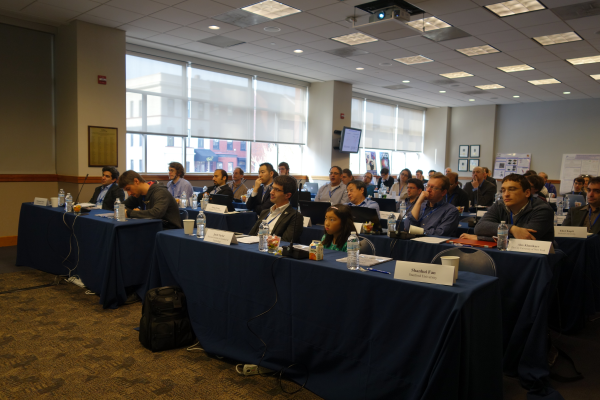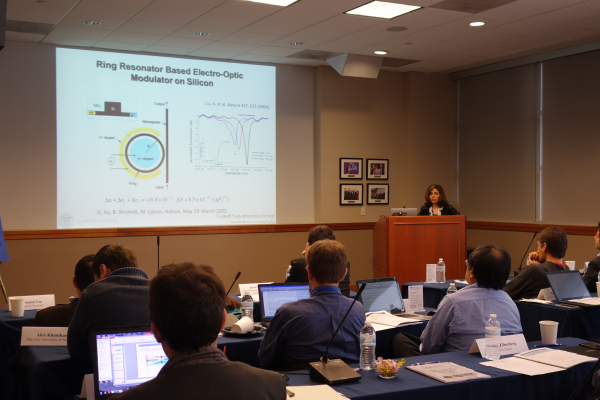How do you make a topologically interesting system with light?
Sean Kelley
Another application where topological properties offer an exciting advance is optical communications. Optical fibers offer a very good way to send information quickly, but the information does not always remain clean. Defects within the fibers can cause light to scatter outward, resulting in a loss of signal, or even back along the fiber, which can interfere with
further messages and cause errors in the received information. During his talk, Shanhui Fan described a topological isolator which modulates the mode of the light in one direction but not the other, potentially eliminating current back-scattering issues in optical fibers.
With these exciting applications in mind, how do you make a topologically interesting system with light? As mentioned before, a common goal is realizing the quantum Hall effect, now familiar in electronic and cold-atom systems, in a photonic system. This means demonstrable topological protection and the existence of edge modes, and yesterday's talks focused on progress in engineering more robust systems as well as new techniques for measuring
topological states.
A number of methods for breaking time-reversal symmetry were discussed. Common to all were the creation of an effective gauge field, analogous the role the magnetic field plays in the quantum Hall effect for electrons. An array of photonic cavities, waveguides arranged into a photonic crystal, and modulation of confined light were among the techniques explored. How
strongly you can break time-reversal symmetry corresponds to how topologically protected the system is, and these techniques demonstrated promising advances towards very robust systems.
How do you know you have a topologically nontrivial system? Techniques for measuring topological properties included a presentation from Oded Zilderberg on an algorithm for accessing bulk topological properties, measuring edge states through imaging energy loss, and the observation of topological phase transitions.
Some questions which arose were: How can you know that a state is topological in the presence of loss? How do you characterize these topological systems, i.e. with an index?
More to come on the future research directions of this new field, as well as theoretical and experimental issues, as the Incubator concludes.


